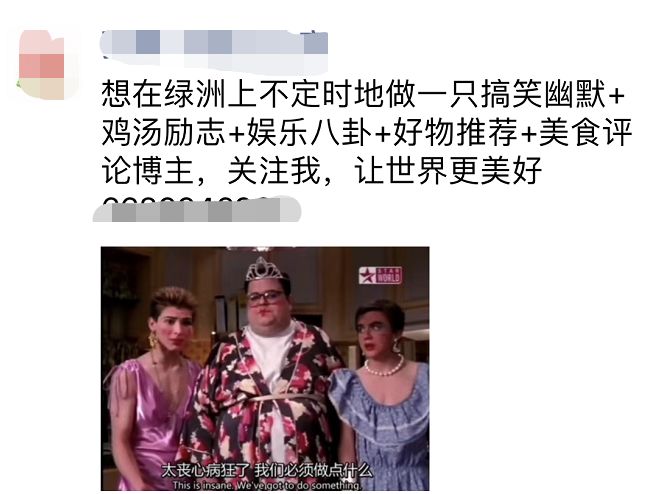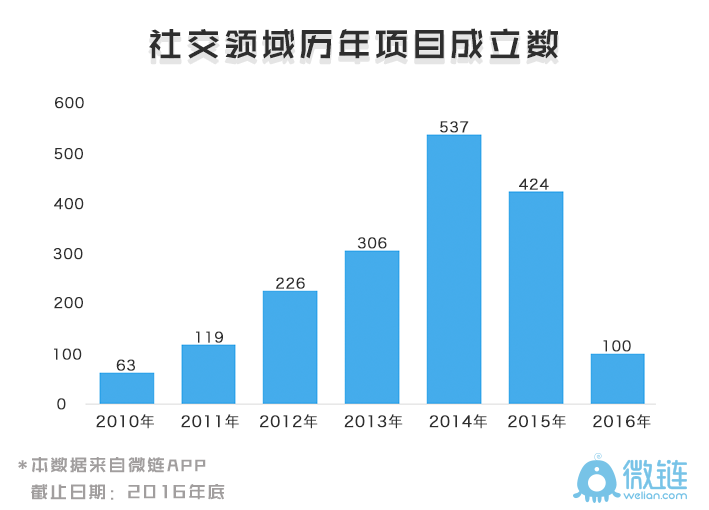People will eventually leave ZAO and the oasis and return to the predecessors of WeChat Weibo.
Editor’s note: This article is from WeChat public account “Internet refers to the North” (ID: Hlwzhibei), author Pu Fan.
The original is an article I wrote a year ago. At that time, when bullets, flashes and toilets were released, many people lamented that “the good days of WeChat are over,” and “the social war is about to begin.”
But then the facts prove that this is just a typical periodic illusion –People have an “aesthetic fatigue” for the inherent pattern of a field, but this is not It means that there is an opportunity in the market, and people’s true demands are not satisfied by the birth of a “new product”.
Today, with the popularity of ZAO and the oasis, this cycle seems to be coming again.
ZAO and Oasis are on fire, and the face-changing video and invitation code from the circle of friends is a real fire. It proves that it is hotter than a year ago when “investors claimed more than 50 VCs a day”. Bullet text messages are too real.
But fire is just one side. If “can influence the industry’s big trends” (such as Xiaomi’s domestic Android machine and “Tucao Conference” in the domestic talk show) as a necessary condition for a successful product, then “ZAO and Oasis open a new era of socialization” obviously Lack of color:
In the industry level, ZAO does quickly popularize AI face-changing technology for every ordinary user, but from now on, ZAO is almost no different from various beauty filter and video editing software: as a “tool” Help users generate content, the final propagation path is fully handed over to Weibo, WeChat – in essence, there is no new scene for users – not to mention the oasis, even the use of the method does not require users to learn.
The user level is even more interesting. In addition to the habitual use of the “traditional” communication paths such as Weibo and WeChat, in the eyes of many users, the greater significance of these products lies in “the opportunity to reshuffle themselves” on a new social platform. Re-establishing your own people–even the opportunity to get to the upstream in the process of reshuffling, becoming the KOL in the new environment.

It has no moderator, no program settings. To put it bluntly, it is the default disordered and irregular dialogue mode in which the voice right is basically based on grabbing. You can understand that they “have not gone to solve problems from the starting point”.
Social is sexy, but it’s also hard.
Even if ZAO and Oasis break into people’s horizons in such a strong way, “social entrepreneurship” is still not a good business: industry rules have been shaped, market resources are highly concentrated, and social scenes that have not yet been developed on a large scale are either Too small to go on the edge of the law, in short, the return on investment is higher than the risk of entrepreneurial projects.
This trend is even more cruel in front of the data. According to media statistics, although the number of entrepreneurial projects in the social field continued to increase significantly in 2014, the cumulative growth rate exceeded 50%, but less than one-third of the entrepreneurial projects that were not launched, acquired, closed and transformed were eliminated. The company is willing to get financing, and the standard is divided into B rounds and above, accounting for only 2.8% of all projects.

Popular Comments encourages users to use WeChat to log in and share their updates with their friends through red envelope rewards, but at the same time all user consumption updates (including reviews, check-ins, etc.) will be “forcibly” shared with friends and cannot be turned off. .
In the face of netizens’ doubts about “hidden agreements” and leaking users’ personal privacy, Public Comments apologized and added the “One-click disable all third-party social relationships” feature.
Travel products also want to socialize:
Time pushes forward again, and the airline has issued an apology and rectification statement on “Leaking User Privacy” because its “virtual cabin function” can be used not only in the selection page group.Chat, you can also view the personal information of the seat passengers such as avatar, name and other personal information.
Even even the curriculum wants to socialize:
Three years ago, the super-study table of the allegedly negative and highly criticized sections was “speaking down” and “coming in the middle of the night”.

Perhaps directly related to Tencent’s rapid growth since 2016 and the traffic depletion crisis that occurred in the same period in 2016:
At the end of 2017, the surge in Tencent’s stock boosted the company’s total market capitalization to $500 billion, surpassing Internet giants such as Facebook and becoming the largest company by market capitalization in Asia. In the “2016 Tencent Annual Report” published earlier, the monthly activity of the two main products of WeChat and QQ reached 889.3 million and 868.5 million, respectively, far higher than the “Statistical Report on the Development of China’s Internet Network” announced in the same year. Number of national netizens;
Also, around 2016, entrepreneurs clearly felt that the remaining available traffic in the market is drying up:
On the one hand, Internet users are rapidly focusing on the mobile side, but the main usage scenarios of the mobile terminal are mainly built in the BAT system;
On the other hand, since the Q1 quarter of 2015, shipments in the Chinese smartphone market have continued to decline, which tells people that “the new market is not increasing much”.
So after listening to the 2016 New Year’s speech of Luo Ji’s thinking, many entrepreneurs have begun to take Luo Zhenyu’s “National Time Theory” as a standard, and clearly put forward a new entrepreneurial goal: “If you can’t grab enough The user time has completely lost the space for entrepreneurship.”
Under such a complex background, when people re-open Tencent to avoid “traffic catastrophe” and even continue to grow bigger and stronger during this time, the general reason is directed to the “social” basic disk, namely A large user base through QQ and WeChat precipitation. With enough traffic, expanding your business scale is a multiplier.
The more important point is that the continuous expansion of Tencent’s business scope (such as e-commerce, travel, travel, short video, content distribution, Q&A community, etc.) seems to be linked to Tencent’s own social genes, namely Social life is the most common life scene for ordinary people. It is often the starting point for other behaviors. For example, people will recommend good products to each other during the social process, share fun videos, and discuss together.The travel plan to come – This gives the capital market enough imagination space.
So when entrepreneurs find it difficult to distance through technology or business capabilities in the short term, social interactions that can be driven by hormones become the most practical shortcuts, such as cooking, fitness, and even menstrual periods. Every app has a social section.
But the facts are just as mentioned above. Tencent, which has “social genes”, has succeeded in expanding other businesses. On the contrary, it often doesn’t work. Many startups who try “product + social” strategies are either obscure. Or trigger a negative entanglement or even close the shelf.
Why is this again?
Social is not a panacea for entrepreneurial success
There are many reasons behind the many failures of startups in the “social + product” strategy. To answer this question, we need to put aside the business-level case questions and list a few realities that need to be solved in a standard sense of startups (ie, non-large companies investing in subsidiaries or new projects transformed by large companies). Question:
1. Low awareness in the field;
2, limited channels for introducing new users/traffic;
3, low user loyalty;
4, user learning costs are higher;
5, the product is not perfect;
6, poor ability to resist risks;
In this case, many of the innate attributes of “social” have become the embarrassment of startup companies.
For example, questions 1 and 2, although social as the most high-frequency life scene, is really suitable as a low threshold for new users to access products, but also because “social” is too common, people are “normal social The psychological expectation of behavior has dropped to a very low level. At this point, if you want to use “social” as a valid window for external information/value output, you will obviously be unconsciously “socially gimmick”;
For questions 3 and 4, although social behavior is the most abundant life scene, it is really suitable as a way for users to stay after they have contacted the product, but it is also because the behavior of “social” is too uncertain. The fundamental factors that people stay in the product become uncontrollable. At this point, if you want to build “social” into your own traffic base, you have to adopt a strong operational strategy, which means increasing costs;
For questions 5 and 6, although social can help products achieve some emotional bonuses, it can certainly make up for the shortage of hard materials to a certain extent, but also because “social” makes users stay longer and more behavioral. The mode of activity is uncontrollable, and it also lengthens the dimension of the product to be tested – in other words, when the productThe relationship with the user is maintained by “demand”, then all the problems are technical problems; and when the relationship between the product and the user is maintained by “social”, then all the details outside the technology can become a problem.
So it’s not hard to find that socializing is not a panacea for an Internet company/startup, but a dangerous luxury. Because in the process of social productization, the user has the highest cost of rent-seeking, the most rigorous path to generate revenue, and the most likely result.
Of course there are some issues that you will encounter at a specific level of operation:
For example, the social scene provided by the tool product does not give the user a better interactive experience, such as a tricky ride, conceiving a conversation in a confined space of a private car to a friend, which is usually the case. Under the hood, it is too late to guard against strangers. What are you talking about and making friends?
In fact, social is something that such products don’t need and should not extend beyond the underlying services. To eat food or fitness photos, people are more inclined to choose a circle of friends; to make friends, in addition to QQ and WeChat there are many “match” apps, how many people will be willing to choose a peer-to-peer transport.
Secondly, these products are often not as large enough as Tencent, but they are rushing to lengthen the front line and lead to increased risks. For example, personal security leaks, illegal and pornographic information dissemination, and other social products are not well controlled. .
However, for the sake of profit, as long as there are no problems or problems that are not known to the public, they often choose to turn a blind eye to the risks and gradually evolve into the loss of the “bottom line.”
The “Beijing News” evaluation of similar social functions of tool products “always open a door, and then continue to patch up, to protect user rights is always lagging, passive.”
Is the world really bitter?
A few years ago, many people used the famous sentence in “Historical Records Chen Sheng Family” to explain the explosion of bullet text messages, that is, “the world is bitter and long-term,” and used the allusion to describe the long-term monopoly position of WeChat in the industry. It not only wipes out the theoretical vitality of the social field, but also makes WeChat lack the necessary competitive pressure to continuously improve the details of the product.
Of course, this statement can also find some cases as theoretical support, such as nails, veins, etc. The reason why these products can be latecomers, it seems to benefit from the use of WeChat in the process of working, generated in the work scene The lack of support for a series of requirements allows users to actively migrate.
But in fact, from the user’s point of view, we may get another answer, that is, people’s “bitter” is not WeChat or any other social software, but the “bad” side of the “bitter” social network era:
When the social network completes the full penetration of real life, the role of the core platform defines people’sLifestyle, then as a person grows older, his personal image will be defined by a social platform he uses – people understand him, communicate with him, define his value – this person wants The best chance to break these solidified impressions is to reinvent the “new social platform.”
So “unfortunately”, Shuangwei has been large enough to cover all the social behaviors that all netizens and all netizens will appear, and can only guarantee the “disadvantages” in the social scenes that are completely accepted without reservation. At this time, even if Tencent and Sina have enough ability to find a solution, the solution is bound to be a linear and long process, and it will inevitably leave many entrepreneurial opportunities for latecomers.
But there are two real problems.
First of all, can people really get the theoretical opportunity to “reinvent”? It should be difficult. After all, social networks are not independent, but a concentrated representation of real life. In the very words of the sentence, the birth of the new platform can give people a short sense of freshness – but the tide will eventually fade away, to see who is swimming naked.
Another real question is, can the production trajectory of the nails be mass-produced? Can ZAO or Oasis replicate the same trajectory? It may also be difficult: “Work” as a special “social scene” has rules and priorities that are different from everyday social interactions, which makes it possible to complete 0 to 1 creations.
As for the ZAO and Oasis products, if you only use the original deficiencies of WeChat to carry out the second creative expansion, it is probably difficult to put out the “two-eighth law” limit, and the industry’s 0 to 1 is split from 0 to 0.8 and 0.2 – in addition to raising the migration costs of user habits, it is difficult to reach higher ceilings.
After the heat, people will eventually leave ZAO and Oasis and return to the predecessors of WeChat Weibo.
Headmap source: Pexels